Vehicle Cooling System Calculator
Calculate cooling requirements for modern vehicles based on the article's technical data about radiator evolution. Input your vehicle type and specifications to see how much heat management is needed compared to traditional systems.
Input Specifications
Results
Cooling System Analysis
Enter vehicle specifications to see cooling requirements.
Why This Matters
Modern cooling systems are designed for precision control. Gasoline engines require 20-30 kW of cooling, while EV motors need only 2-5 kW. This difference explains why electric vehicles don't need large front-mounted radiators. The shift to distributed cooling allows for better efficiency, reduced weight, and improved performance - as explained in the article.
Look under the hood of a car built in the 1990s and you’ll see a big, bulky radiator up front-metal fins, plastic tanks, hoses snaking everywhere. Now, pop the hood of a 2025 Toyota Camry, Hyundai Ioniq, or even a Ford F-150, and that radiator might be gone. Not because it broke, but because it was intentionally removed. Modern cars don’t need them the way they used to. So what happened?
The radiator wasn’t broken-it was replaced
The radiator’s job was simple: pull heat out of engine coolant and dump it into the air. That worked fine for decades. But as engines got smaller, hotter, and more efficient, the old radiator design started to fall behind. A traditional radiator needs airflow to work. That means it has to sit in front of the car, where it’s exposed to bugs, rocks, and road salt. It also forces engineers to design the whole front end around it-grille size, bumper shape, air ducts. All of that adds weight and drag.
Today’s engines run at higher temperatures for better fuel economy and lower emissions. That means the cooling system has to be more precise. A radiator can’t adjust fast enough. It’s either on or off-cooling too much or too little depending on speed and load. That’s why automakers started replacing them with something smarter: electric coolant pumps and modular, distributed cooling.
Electric pumps and localized cooling
Instead of one big radiator chilling all the coolant in one spot, modern cars use multiple small electric pumps that move coolant exactly where it’s needed. These pumps are controlled by the engine computer in real time. If the battery in your electric car is getting hot during fast charging, a pump sends coolant straight to the battery pack. If the motor in your hybrid is overheating during hill climbing, another pump directs flow to the motor. No need to route coolant across the whole engine bay.
These systems use smaller heat exchangers-sometimes just thin metal plates with fins-that can be tucked into tight spaces. You’ll find them behind the headlights, under the floor, or even inside the cabin near the HVAC unit. They’re lighter, more flexible, and far more efficient. A 2023 BMW i4 doesn’t have a front radiator at all. It uses two liquid-to-air heat exchangers mounted near the wheel wells, plus a small one under the rear seat for the battery. Total cooling capacity? Higher than most 2000s sedans with full radiators.
Electric cars don’t need big radiators
Electric vehicles changed everything. Gas engines produce tons of waste heat-up to 70% of fuel energy becomes heat. Electric motors? They’re 90%+ efficient. That means far less heat to manage. A typical EV motor might only need 2-3 kW of cooling under full load. A gasoline engine? 20-30 kW. That’s a tenfold difference.
So EVs don’t need huge radiators. They need targeted cooling. The battery pack, power electronics, and motor each have their own small cooling loops. These loops connect to compact heat exchangers that can be placed anywhere-not just up front. The Tesla Model Y, for example, uses a single underfloor heat exchanger that cools the battery and power inverter together. No front grille needed. In fact, Tesla’s newer models have solid front panels with no openings at all.
Even plug-in hybrids are ditching traditional radiators. The Toyota Prius Prime (2024) uses a compact, dual-function cooling unit behind the front bumper that handles both engine and electric system cooling. It’s 40% smaller than the radiator in the 2010 Prius.
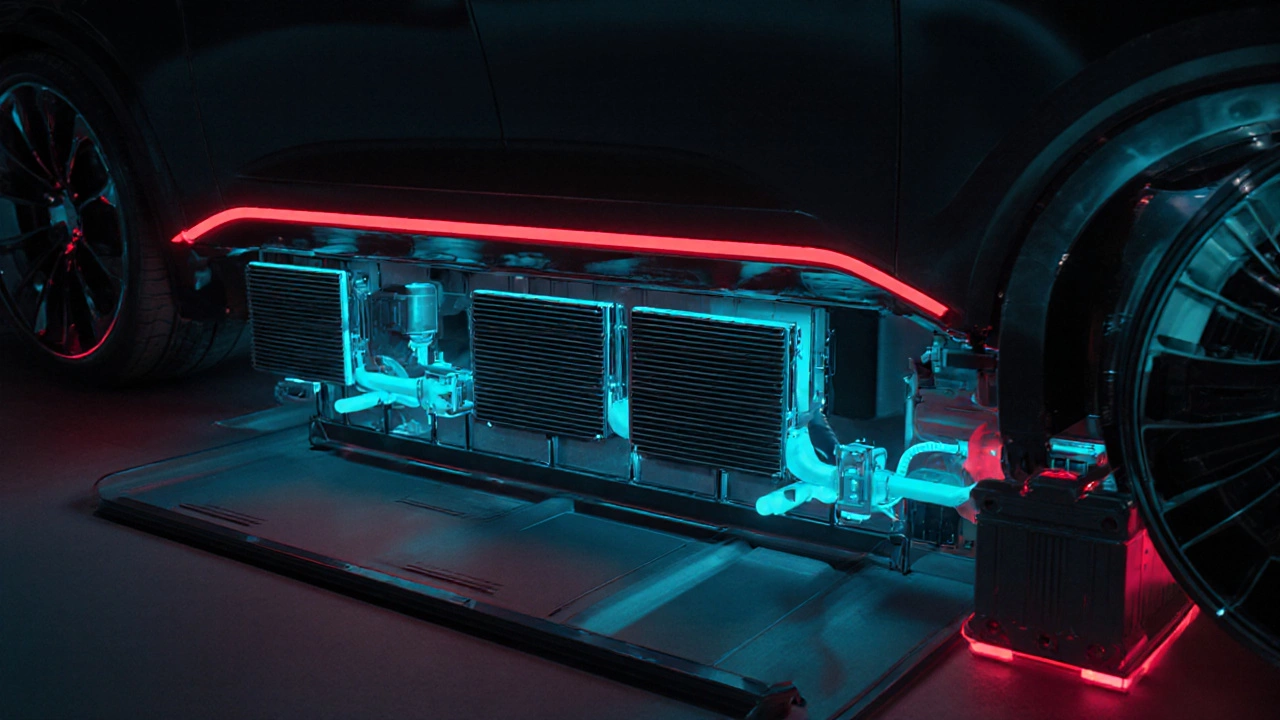
Heat management is now a system, not a part
Modern cooling isn’t about one big part anymore-it’s about a network. Sensors monitor temperature at 15+ points in the vehicle. The ECU decides which pumps run, how fast, and which heat exchangers activate. It’s like having a smart thermostat for your whole car. That’s why you can now drive an EV in -20°C and still get good range. The system doesn’t just cool-it heats too. Waste heat from the battery and motor can be redirected to warm the cabin, reducing the need for electric heaters that drain the battery.
This level of control is impossible with a traditional radiator. You can’t adjust the airflow through a radiator based on whether the battery is at 85% or the motor is idling. But you can tweak an electric pump’s speed in milliseconds.
What about maintenance and cost?
Some people think removing the radiator means fewer repairs. That’s not quite true. While you’re eliminating one common failure point-the radiator tank cracking or the core clogging-you’re adding complexity elsewhere. Electric pumps can fail. Heat exchangers can leak. And because these systems are integrated, fixing one part often means replacing a whole module.
For example, if the underfloor heat exchanger in a Hyundai Kona EV leaks, you might need to drop the entire underbody panel, drain multiple cooling loops, and replace a sealed unit. That’s more expensive than replacing a $150 radiator. But here’s the trade-off: you get better efficiency, longer engine life, and improved performance. The system lasts longer overall, even if repairs are pricier when they happen.
Automakers are betting on longevity. Modern cooling systems are designed to last 150,000+ miles without service. No more flushing coolant every 50,000 miles. Many new EVs use long-life coolant that never needs changing.
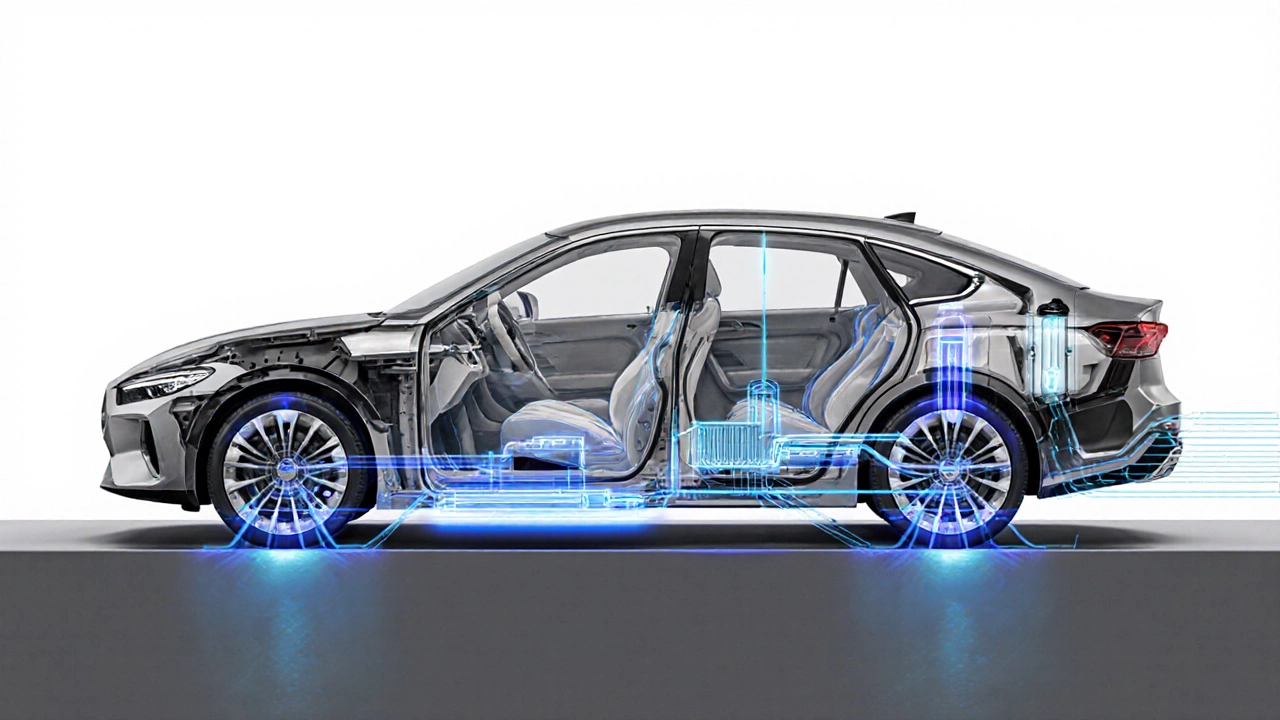
What cars still use traditional radiators?
If you’re wondering whether your car still has one, check this: if it has a gas engine and was made before 2015, it almost certainly does. Most gas-powered cars built after 2020 still have a radiator-but it’s smaller, lighter, and often paired with electric fans that only turn on when needed. The radiator isn’t gone yet in ICE vehicles, but it’s being phased out.
High-performance cars like the Porsche 911 GT3 or the Chevrolet Corvette still use large front radiators because they need maximum airflow for sustained track use. But even these are adding auxiliary cooling loops for the transmission and differential.
The real shift is in mass-market vehicles. The Ford Mustang, Toyota Camry, and Honda Accord all now use hybrid cooling systems. The radiator is still there, but it’s just one component in a much larger network.
Is the radiator dead?
No. But it’s no longer the center of the cooling system. It’s become a supporting actor. The real innovation isn’t in the radiator itself-it’s in how heat is managed across the entire vehicle. The shift from one-size-fits-all cooling to smart, localized thermal control is one of the biggest, quietest revolutions in automotive engineering this decade.
By 2030, most new cars sold globally will have no traditional radiator. Instead, they’ll have a series of intelligent, compact heat exchangers working together. The radiator didn’t fail. It evolved.
Do modern cars still have radiators at all?
Many still do, but they’re smaller and often just one part of a larger cooling system. Gas-powered cars made after 2020 usually have a radiator, but it’s paired with electric pumps and multiple heat exchangers. Electric vehicles often have no front radiator at all, using instead compact, distributed cooling units placed near the battery, motor, and electronics.
Why did electric vehicles make radiators obsolete?
Electric motors and batteries generate far less waste heat than gasoline engines. A gas engine produces 20-30 kW of excess heat; an EV motor needs only 2-5 kW. That means you don’t need a large radiator to dump heat into the air. Instead, EVs use small, targeted heat exchangers placed where heat is generated-like near the battery pack or power inverter. This makes cooling more efficient and reduces the need for front-facing air openings.
Are modern cooling systems more reliable than radiators?
They’re designed to be more reliable over the long term. Traditional radiators often fail due to corrosion, stone damage, or internal clogging. Modern systems use sealed, long-life coolant and avoid exposed front-mounted components. However, when a pump or heat exchanger fails, repairs can be more complex and expensive because parts are integrated into larger modules. Overall, though, these systems last longer-many are rated for 150,000+ miles without service.
Can I still buy a car with a traditional radiator?
Yes. Any gas-powered car made before 2015 will have one. Even many cars made after 2020 still include a radiator, especially if they’re not fully electric. But if you’re buying a new EV or plug-in hybrid, you’re almost certainly getting a modern, distributed cooling system instead. The traditional radiator is becoming rare in new models.
What replaced the radiator in electric cars?
Electric cars use a network of small electric coolant pumps and compact heat exchangers. These are placed near the battery, motor, and power electronics. Heat is moved through liquid loops and dumped into the air via thin metal fins, often hidden under the floor or behind the wheels. Some models even use the cabin HVAC system to help manage temperature. It’s not one part-it’s a smart, coordinated system.

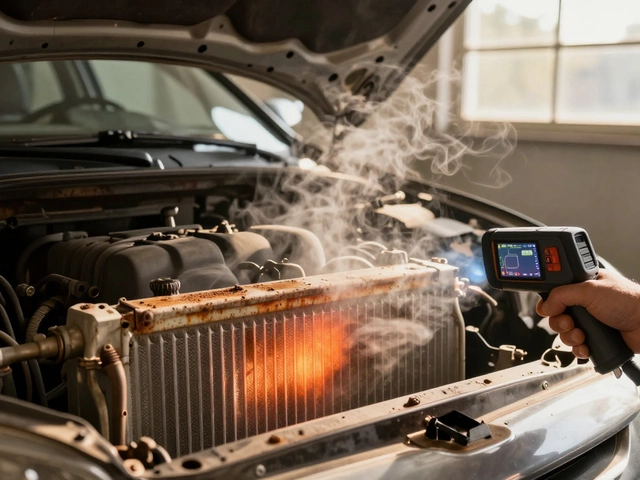



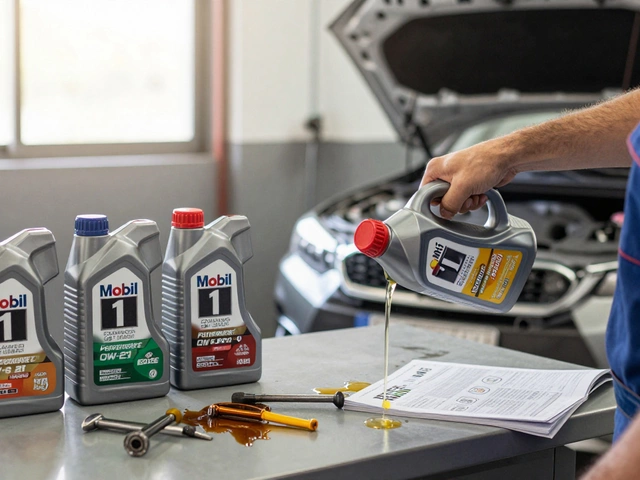



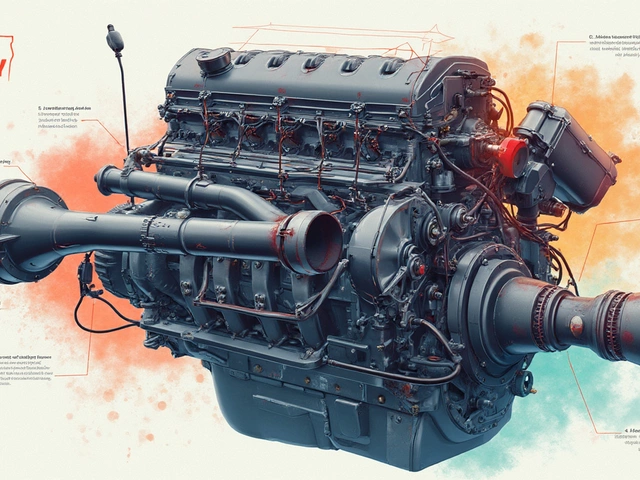
Write a comment